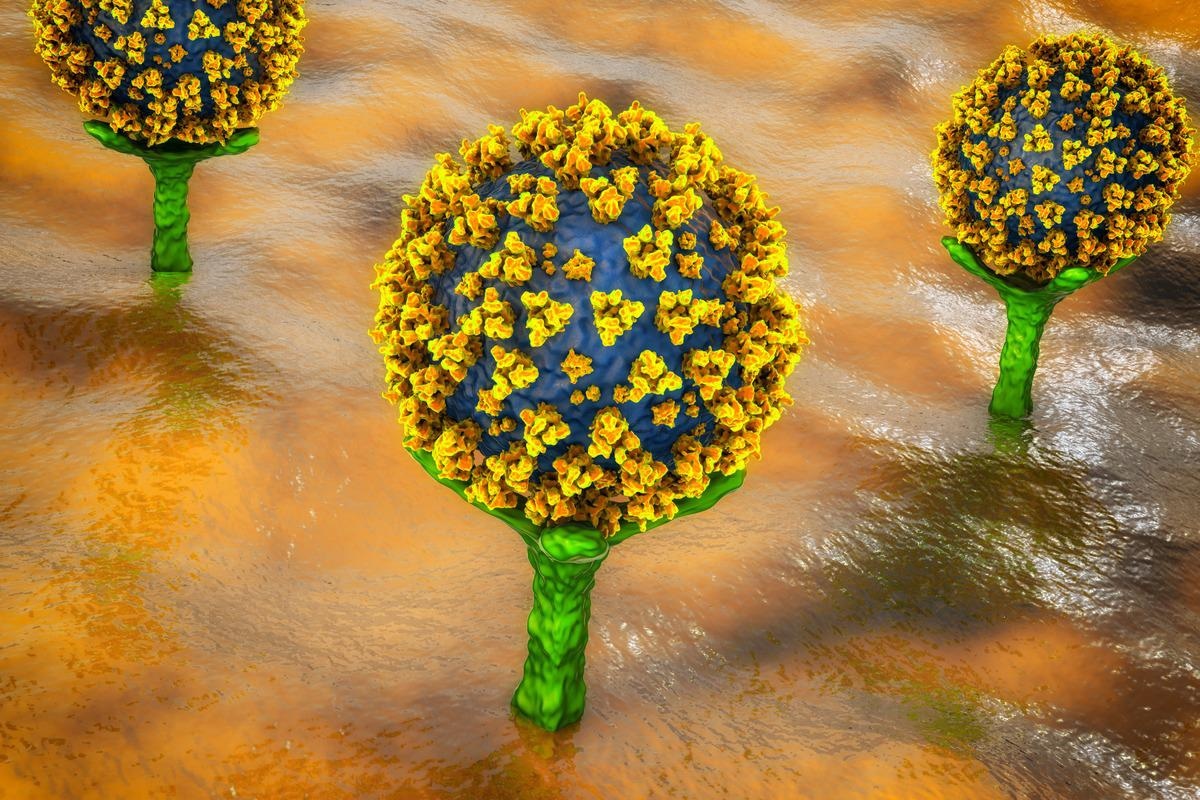 By Neha MathurReviewed by Danielle Ellis, B.Sc.Dec 15 2021
By Neha MathurReviewed by Danielle Ellis, B.Sc.Dec 15 2021In a recent study posted to the bioRxiv* preprint server, a team of researchers generated a set of computed structural models of the Omicron receptor-binding domain (omRBD) attached to its receptor angiotensin-converting enzyme (ACE2). In addition, they modeled several neutralizing and therapeutic antibodies targeting other severe acute respiratory syndrome coronavirus 2 (SARS-CoV-2) strains.
 Study: Structural models of SARS-CoV-2 Omicron variant in complex with ACE2 receptor or antibodies suggest altered binding interfaces. Image Credit: Kateryna Kon/Shutterstock
Study: Structural models of SARS-CoV-2 Omicron variant in complex with ACE2 receptor or antibodies suggest altered binding interfaces. Image Credit: Kateryna Kon/Shutterstock
Omicron (B.1.1.529), the most recently identified variant of concern (VOC) of SARS-CoV-2, is currently spreading within the human population worldwide. However, the approximately 15 mutations in the omRBD of the spike (S) protein most likely responsible for its increased virulence, transmissibility, and susceptibility to neutralizing antibodies are barely known.

 *Important notice: bioRxiv publishes preliminary scientific reports that are not peer-reviewed and, therefore, should not be regarded as conclusive, guide clinical practice/health-related behavior, or treated as established information.
*Important notice: bioRxiv publishes preliminary scientific reports that are not peer-reviewed and, therefore, should not be regarded as conclusive, guide clinical practice/health-related behavior, or treated as established information.
About the study
The researchers modeled omRBD with its ACE2 and various therapeutic entities using both experimentally determined structures of S-TE interactions (of previous SARS-CoV-2 variants) and artificial intelligence/machine learning (AI/ML)-structure predictions as starting points. In total, there were 388 therapeutic entities (TEs), multi-protein complex structures, atomic-level structures for which are archived in the Protein Data Bank (PDB) and were freely available. There were 286 unique bound polypeptides TEs, and some even had more than one distinct polypeptide.
The researchers pursued antibodies from all four Barnes Classes, including a REGEN-COV cocktail and S309 therapeutic antibodies. SARS-CoV-2 antibodies have been divided into four Barnes classes, depending on how their binding sites overlap with the ACE2-binding site and access RBD. A cocktail is two or more unique bound proteins in a single multi-protein complex.
The selection criteria for a given PDB ID were that it should have an antibody with high resolution, resolved residues in and near the S-binding site, no S-mutations, and contains only intended antibody (not a cocktail). In total, 20 out of 236 unique S-bound antibodies were selected from the PDB as representative cases of RBD-binding antibodies for detailed analysis in the context of the Omicron VOC.
Results
The researchers curated all SARS-CoV-2 spike structures in the PDB, including 388 distinct S-TE complexes. They listed bound proteins/peptides or each PDB ID and, if it was a cocktail, specifically by polypeptide chain(s).
Alterations in individual Spike-TE interface topologies and a large-scale analysis of these computed protein-protein complexes provided insights into the molecular basis for their attenuated immune response, suggested possibilities for the redesign of TEs (e.g., antibody cocktails) as effective countermeasures against the Omicron VOC.
Analyses of synonymous and non-synonymous mutations in the omRBD, compared to other SARS-CoV-2 VOCs, indicated that several of these substitutions clustered in a single binding region have likely undergone positive selection, suggesting that these mutations were beneficial to the virus.
Subsequently, Omicron RBD-ACE2 binding was robust, as indicated by the emergence of a multi-residue network of interactions. Further analysis showed that binding between omRBD and Class 1 and Class 2 antibodies was slightly altered due to the domination of destabilizing interactions over stabilizing interactions arising from the numerous substitutions in the Omicron VOC. On the other hand, interaction networks in Class 3 and Class 4 antibodies such as S309 and CR3022, respectively, appeared only moderately affected or unaltered.
Conclusions
To conclude, the present study has organized SARS-CoV-2 spike structures available in PDB to generate computational models of omRBD complexes with ACE2 and a diverse set of antibodies from all four Barnes Classes. These models showed strikingly altered Spike-TE interfaces that helped researchers derive qualitative inferences about the energetic impact of substituted residues at the interfaces and provide hypotheses regarding their effects on the structural remodeling of interactions.
The structure models of omRBD complexes and large-scale analyses of S interfaces of Omicron VOC will bolster research efforts worldwide to aid the global community’s response to the SARS-CoV-2 pandemic.
The data of all the computed structural models, including an initial set of 38 complexes of 20 binding entities, is available online for the broad scientific community to complement ongoing research of the Omicron VOC. This data and models could provide visual aids plus testable hypotheses to wet laboratory investigators trying to characterize the impact of individual or clusters of omRBD substitutions observed in omRBD and develop a better understanding of the efficacy of immune response against the Omicron VOC.
In cases where the binding of therapeutic antibodies is functionally compromised, these models could provide starting points for computer-aided antibody design efforts and molecular level insights into ligand-directed 3D recognition of omRBD by various binding proteins and TEs. In the future, research studies should aim at generating more such models based on other complex structures available in the PDB.

 *Important notice: bioRxiv publishes preliminary scientific reports that are not peer-reviewed and, therefore, should not be regarded as conclusive, guide clinical practice/health-related behavior, or treated as established information.
*Important notice: bioRxiv publishes preliminary scientific reports that are not peer-reviewed and, therefore, should not be regarded as conclusive, guide clinical practice/health-related behavior, or treated as established information.